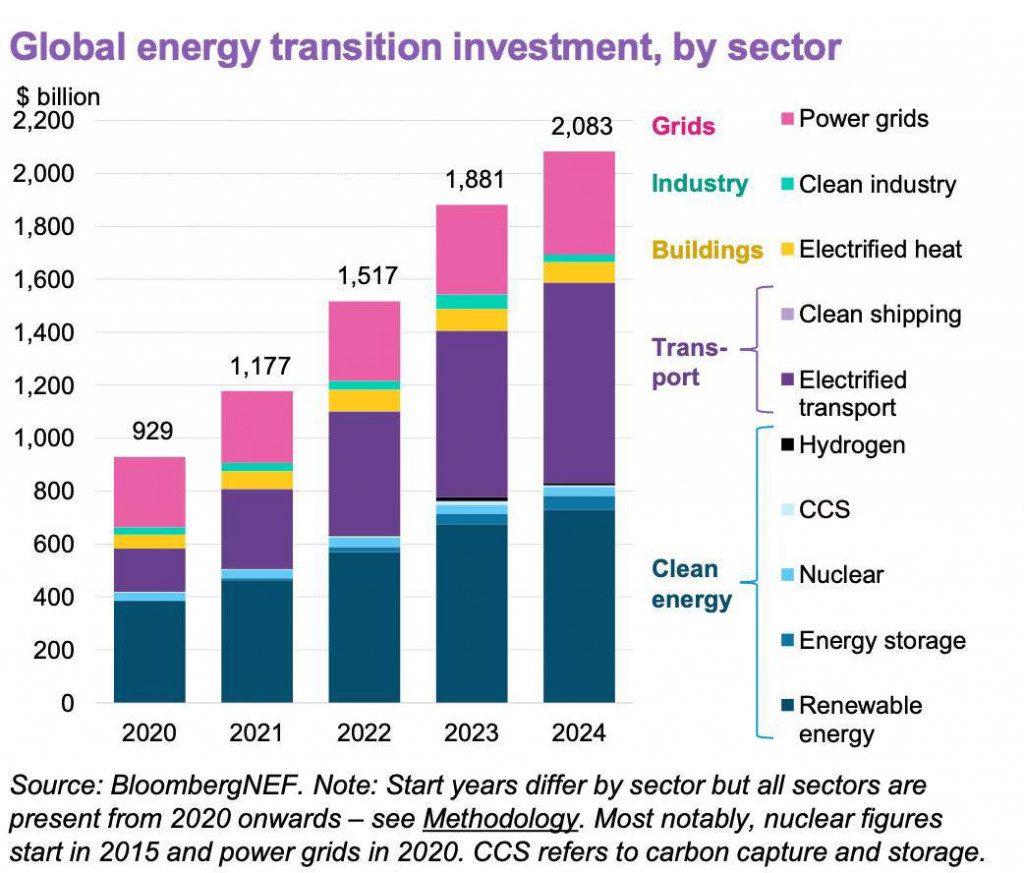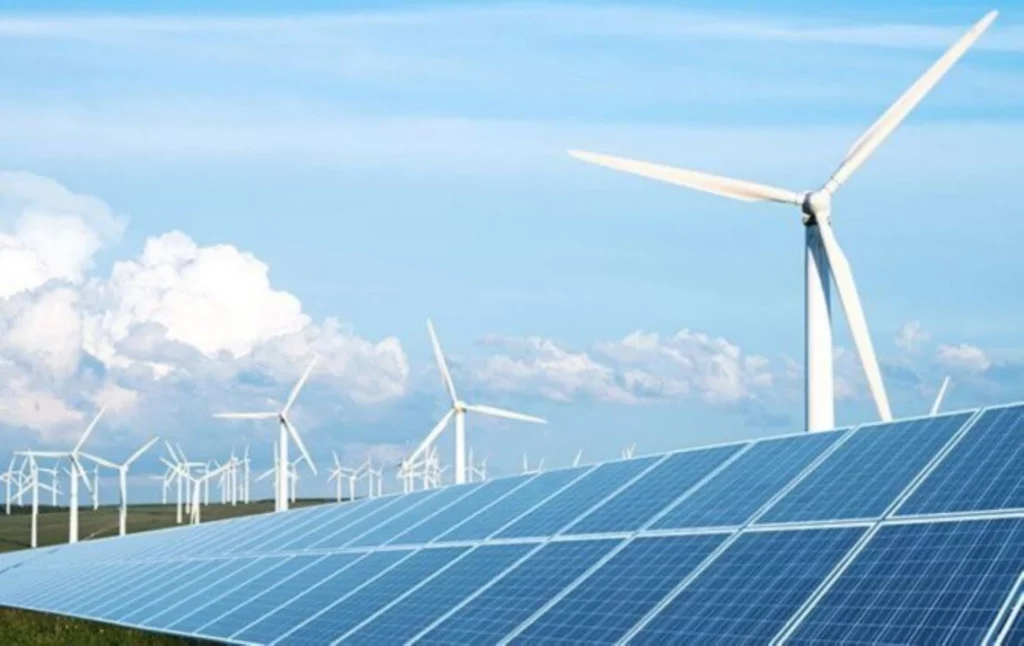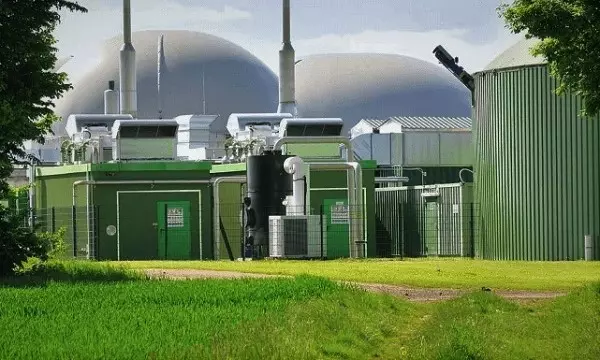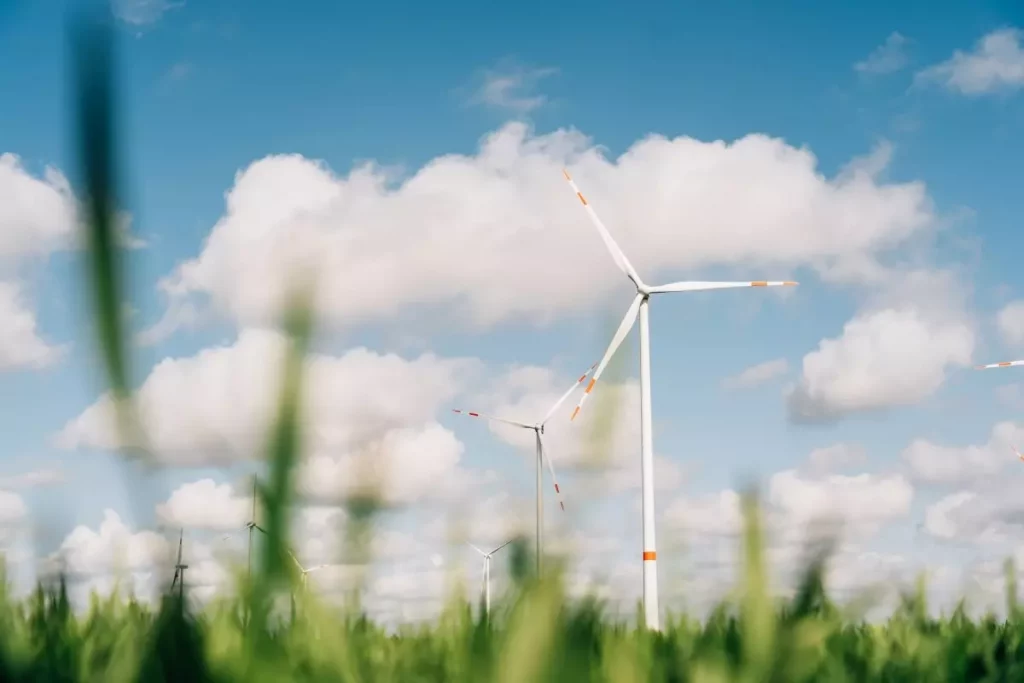
Investments in renewable energy sources reached $623 billion
01.04.2025Total global spending on the energy transition in 2024 reached $1.77 trillion, up 17% from 2023.
This is stated in the report ‘’Energy Transition Investment Trends‘’ prepared by BloombergNEF and translated by the Ukrainian Wind Energy Association.
According to the document, investments in renewable energy sources reached $623 billion, of which $411 billion was directed to solar energy and $188 billion to wind energy. At the same time, energy storage technologies also play a significant role, with $62 billion in revenues, up 40% year-on-year.
The total global installed capacity of solar power increased to 1.6 TW in 2024, and wind power to 1 TW. In just one year, more than 330 GW and 120 GW of solar and wind generation were added, respectively.
Investments in the clean hydrogen sector increased by 17% compared to 2023, reaching $15 billion. Despite the ambitious plans of countries for the hydrogen economy, the actual level of implementation is still lagging behind expectations. So far, global green hydrogen production capacity does not exceed 1 million tonnes per year, although announced projects could increase this figure to 12 million tonnes by 2030.
The carbon capture and storage sector is showing positive dynamics, exceeding $10 billion in investments, mainly driven by the United States and Canada. At the same time, 45% of hydrogen technology projects are at the planning or construction stage.

The electric vehicle sector is showing dynamic growth. Investments in electric vehicle production and charging infrastructure have reached $634 billion, accounting for 36% of the total energy transition costs. China retains the lead, accounting for more than half of the world’s electric vehicle and battery production, although Europe and the United States are also actively expanding their production capacity and charging networks.
A total of 14 million electric vehicles were sold in 2024, accounting for 18% of the total new car market. In China, this figure exceeds 30%, which underscores the active shift in the transport sector.
Despite these positive developments, challenges remain significant. Investments in fossil fuels continue to grow, reaching $1.1 trillion in 2024, accounting for 38% of total energy costs. This indicates that the global economy remains dependent on traditional energy sources, although their share is gradually decreasing. CO₂ emissions in 2024 remain at 39 gigatons, which is only slightly lower than the record levels of 2022. The industrial sector remains the largest source of emissions, although decarbonisation measures continue.
In 2024, 94 countries pledged to achieve carbon neutrality by 2050-2070, and some, including the EU, are considering accelerating the implementation of climate commitments. Ukraine, despite the difficult wartime conditions, continues to move in this direction, increasing renewable generation, working to modernise its power grids and harmonise its energy policy with European standards.
Become a member of 100 RE UA
Switching to 100% renewable energy in Ukraine is possible!




